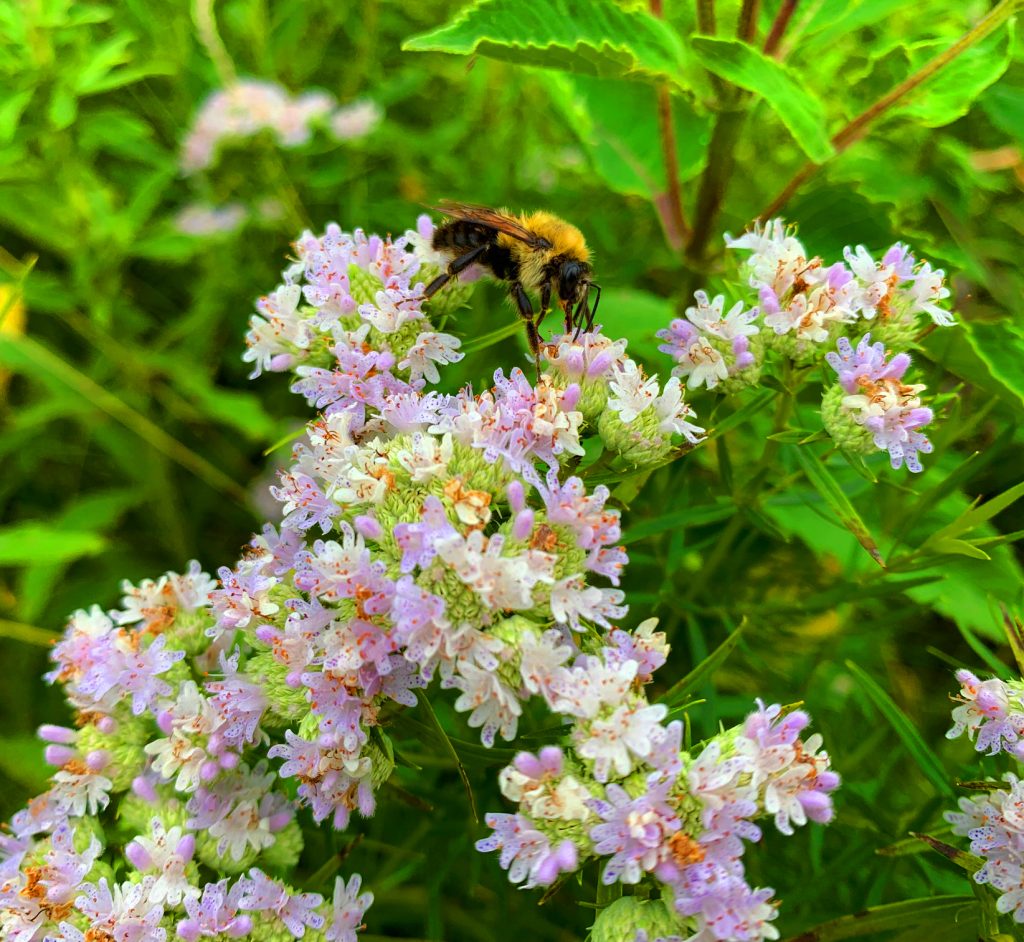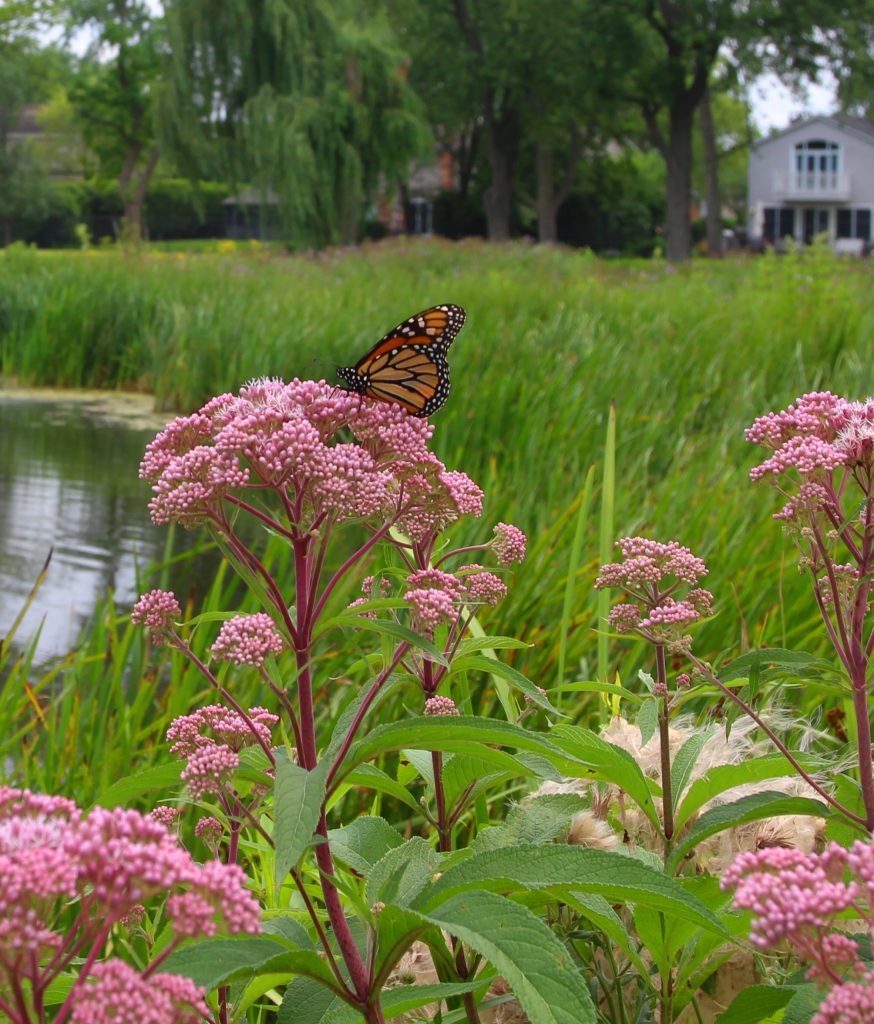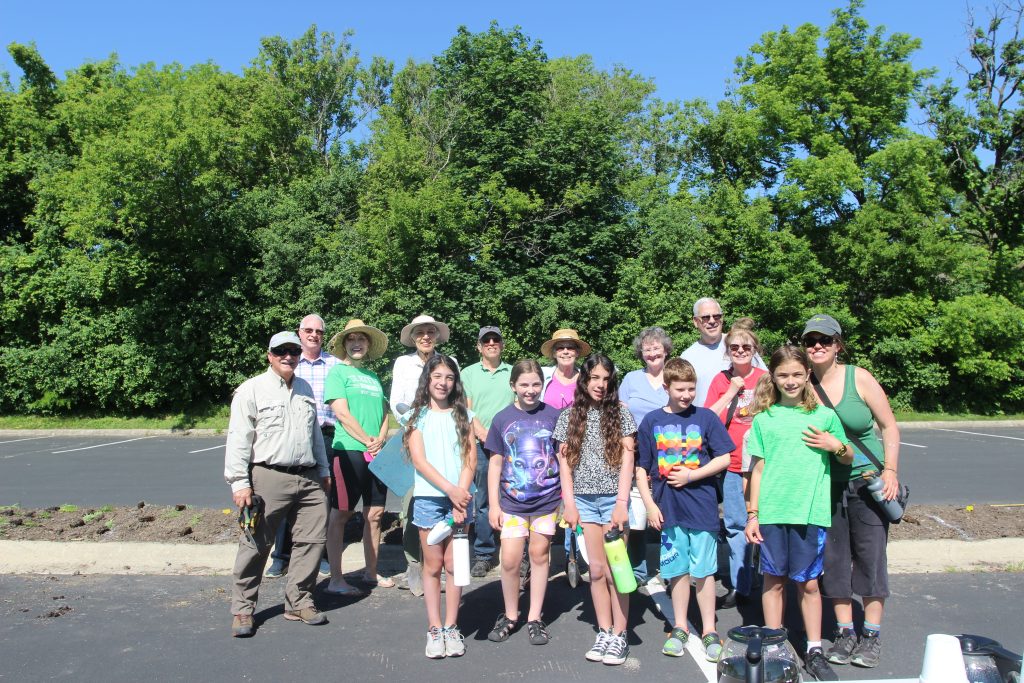Here is more information on the two insects our organization is working to protect: the Monarch Butterfly, and the Rusty Patched Bumble Bee.

Rusty Patched Bumble Bees
The bumble bee is one of the greatest pollinators in the world, and an integral part of Earth’s ecosystems. However, their population is in great decline. How can you help the Rusty Patched Bumble Bee?
Garden: Grow a garden! You can also add a flowering tree or shrub to your yard. Not only will it help the bumble bee, but it will look nice, and something as small as containers on patios can provide nectar and pollen for native bees.
Native Plants: Use native plants in your yard. As Monarchs, Milkweed, and More is an organization centered in Illinois, some examples of native plants are lupines, asters, bee balm, native prairie plants and spring ephemerals. And don’t forget spring blooming shrubs like ninebark and pussy willow! Invasive plants should be avoided and should be removed if they are found in your yard.
Natural Landscapes: Where a garden helps provide the bumble bee with food, natural areas help provide a home for the bees. Many bumble bees create nests in undisturbed soil, abandoned rodent burrows, or grass clumps. Keep some areas unmowed, so that the grass may make a better home for any bumble bees, and should you find a nest make sure to be careful around it. Don’t mow where there might be a nest, or till any soil. If you are unable to provide any natural area in your own yard, supporting natural areas in your community can be just as, or even more, helpful for you native bee and pollinator populations.
Make sure to minimize any use of pesticide or chemical fertilizer! They can cause both lethal and sublethal effects, to both bees and other pollinators.
More Resources on Bumble Bees
- Rusty Patched Bumble Bee Home
- Midwest Endangered Species
- Home, Yard & Garden Newsletter at the University of Illinois
- beehivehero.com
- beespotter.org
- sharpeatmanguides.com
- xerces.org
- keepingbackyardbees.com
- nhsn.org

Monarch Butterflies
The Monarch Butterfly is a butterfly with a wingspan of 3.5-4 inches, or 8.9-10.2 centimeters. It is a herbivore, and can live anywhere from 2 to 6 weeks. Monarch Butterflies can be found in North America, Australia, and New Zealand.
The Monarch Butterfly was likely given its name in honor of King William III of England, and it is the only known butterfly to make a two-way migration like birds do. It is the longest insect migration, spanning 2,880 miles, or 4,635 kilometers. Because of this, as well as the fact they are so recognizable, they are one of the most well-studied butterfly species on the planet.
Their recognizability, the orange coloring of their wings, is a warning to predators that they taste bad or are toxic.
Monarch Butterflies smell with their antennae, and can taste the nectar and water they consume with the sensory hairs on their feet. Monarch Caterpillars have been known to eat an entire milkweed leaf in under five minutes, and eat 200 times their weight in milkweed.
Monarch Butterflies hold much cultural significance. According to traditional belief, they are the souls of ancestors returning to Earth on their annual visit. Another name, All Souls Day, is observed on November 2nd.



